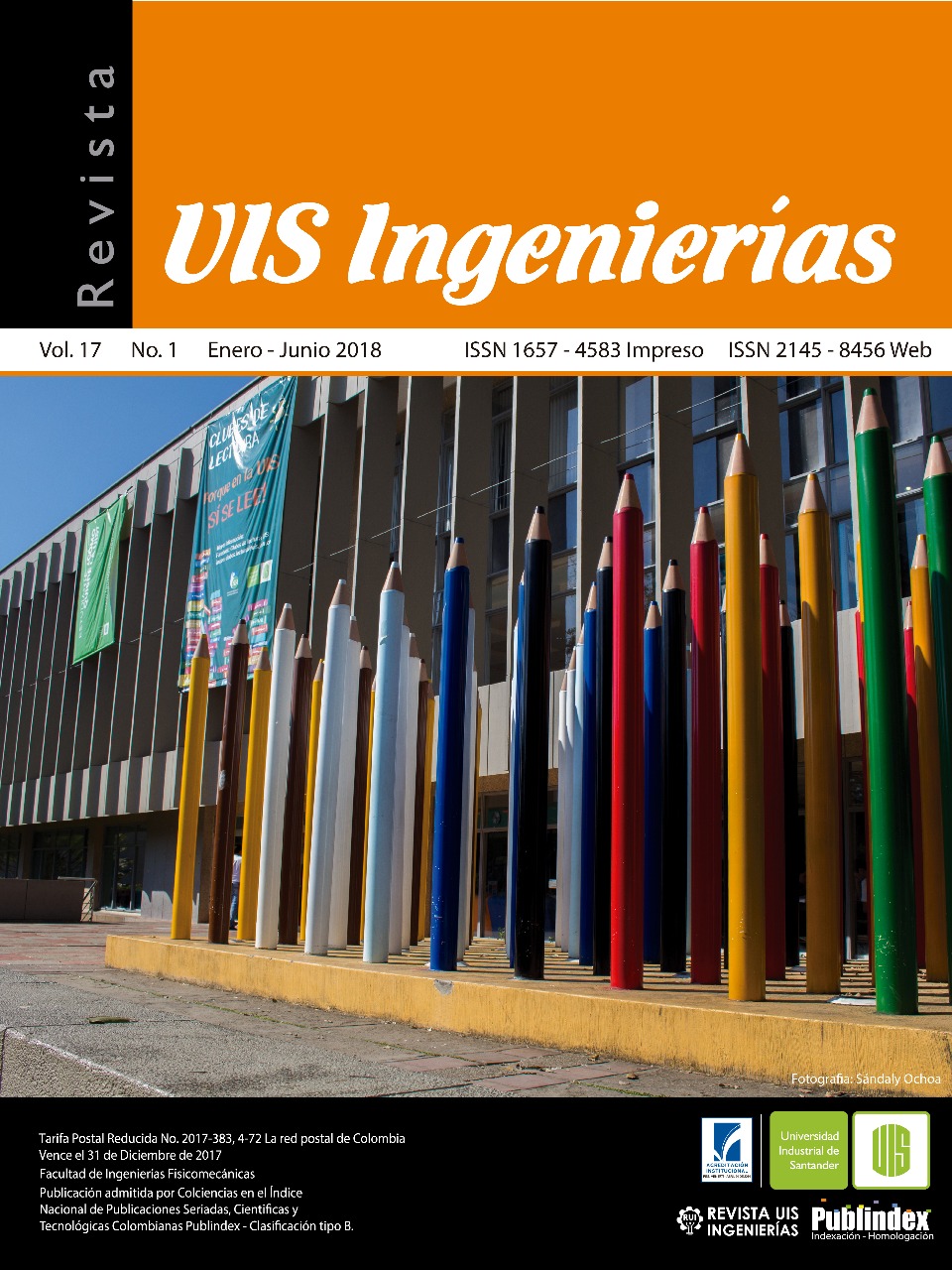Analysis and simulation of the thermal and viscous model of the melt spinning process
Published 2018-01-11
Keywords
- Melt Spinning,
- OpenFOAM®
How to Cite
Abstract
The Melt Spinning process is used for the manufacture of thin ribbons of amorphous materials. The material is injected through a nozzle in the liquid state and solidifies upon contact with a rotating wheel. In this work, we intend to find a computerized simulation of OpenFOAM® with a thermal profile of the material from its ejection through the nozzle to the conformation of the tape itself. A two-phase model of the "Volume of Fluids" (VOF) type is used. Although neither of the two fluids (molten metal and air) can be considered compressible for the working pressures, a compressible nature resolver is used. This allows to represent the changes of density in the air by temperature changes and to define a thermo-physical model for the alloy, not available in resolvers of incompressible nature. For this, it is considered an alloy of constant thermal conductivity, specific heat and density. The phase change is represented by a model that relates viscosity (μ) to temperature (𝑇) in which the viscosity increases several orders of magnitude when the material passes below the crystallization temperature. Among the options of viscous models offered by OpenFOAM®, a polynomial model whose coefficients were determined after expanding the relation μ = -𝑎 (𝑇 -𝑇 *) 7 + μ * is selected. Using OCTAVE, the values of the coefficient 𝑎, 𝑇 * and μ * were modified until an adjustment curve [1] was obtained with the expansion of the function to obtain the final coefficients of the polynomial within the temperature range of 600 to 1700ºC
Downloads
References
M. Barone, M. Pagnola, J. Useche, "Simulación con OpenFOAM® del proceso de Melt Spinning, una introducción a escala semi industrial", X Congreso Congreso Colombiano de Métodos Numéricos. Simulación en Ciencias y Aplicaciones Industriales X CCMN 2015, pp. 23-25, UTB Cartagena, Colombia, Sep., 2015.
D. Muraca, J. Silveyra,M. Pagnola, V. Cremaschi, "Nanocrystals magnetic contribution to FINEMET-type soft magnetic materials with Ge addition",Journal of Magnetism and magnetic Materials, vol. 321, pp. 36403645, 2015.
M. Pagnola,M. Malmoria,M. Baroneand H. Sirkin, "Analysis of Fe78Si9B13 (%at.)ribbons of noncommercial scrap materials produced by melt spinning equipment",Multidiscipline Modeling in Materialsand Structures, vol. 10, no. 4, pp. 511-524, 2014.
Paul H. Steen, Christian Karcher,"Fluid mechanics of spin casting of metals",School of Chemical Engineering, Cornell University, Ithaca, New York 14853-5204 USA, Institute for Fluid Mechanics, Dresden University of Technology, 01062 Dresden, Germany.Kurokawa et al. - US Patent, no. 5,908,068, 1999.
M. Malmoria, M. Pagnola, M. Barone, "Estudio Magnético de Cintas de FeSiB Obtenidas mediante Melt Spinning", 13er Congreso Internacional en ciencia y Tecnología en Ciencia y Tecnología de Metalurgia y Materiales, 2013. [En línea], Disponible en: http://www.samconamet2013.misiones.gov.ar/
G-X Wang and E Matthys, "Mathematical simulation of melt flow, heat transfer and non-equilibrium solidification in planar flow casting", Modelling and simulation in materials science and engineering, vol.10, no. 1, pp. 35–55, 2002.
M. Sowjanya, T. Kishen Kumar Reddy,"Cooling heel features and amorphous ribbon formation duringplanar flow melt spinning process", M. Journal of Materials Processing Technology, vol. 214, pp.1861–1870, 2014.
M. Bussmann,J. Mostaghimi, D.W. Kirk, and J.W. Graydon,"A Numerical Study of Steady Flow and Temperature Fields Within a Melt Spinning Puddle". Disponible en: http://lib-www.lanl.gov/lapubs/00357001.pdf
M. Barone,A.Marrugo,M. Pagnola,J. Useche, "Cambio de fase en el proceso de Melt Spinning: Análisis de capa limite y perfil térmico”, Quinto Simposio Nacional en Mecánica de Materiales y Estructuras Continuas – SMEC, 2016.
M. Pagnola, M. Malmoria, M. Barone, "Biot number behaviour in the Chill Block Melt Spinning (CBMS) process", Applied Thermal Engineering, vol. 103, pp. 807–811, 2016.

